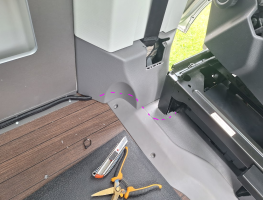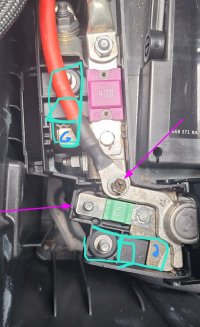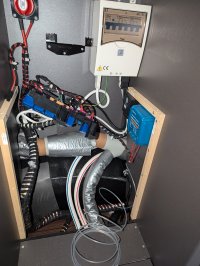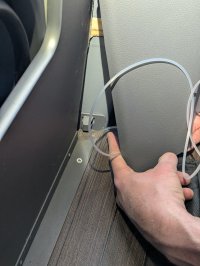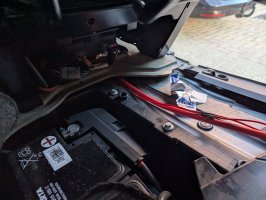DonGraham
VIP Member
Hi, mine is the 680, I didn't take any pics and now there is nothing really to see as the cable is hidden away. Yours being the 600 will be better in so much as you will have more cable available to allow a virtually completely concealed install. As mentioned in my initial post, on a 680 the cable has to go over the floor between the rear seat and under the passenger seat, although close to the wall and not where it might be stood on. As it is under the carpet it is not really an issue. With a 680 an extra foot of cable would be helpful!Has anyone fitted the Ecoflow alternator charger to their GC600 and able to share any pictures of their installation ? Many thanks.
The dual mesh covered cable is thick and can be awkward if not kept straight and must not have any twists as you install it or it will kink. I mounted the EAC directly under the rear outdoor shower shelf, others have mounted within the rear cupboard. It depends on where you intend to site the Ecoflow. The lead from the EAC to the Delta 2 is about 1 metre long and has a 50mm diameter "cylinder" mounted to it, (as does the starter battery cable) perhaps for RF suppresion?
One thing to note if you mount under the rear shower shelf, don't drill the cable hole into the rear cupboard too close to where the EAC will sit. The cable does not bend so easy. Drill the hole closer to the heater vent so to allow a nice slow bend.
It is all fairly straightforward, just allow yourself a day to do it and take your time...









